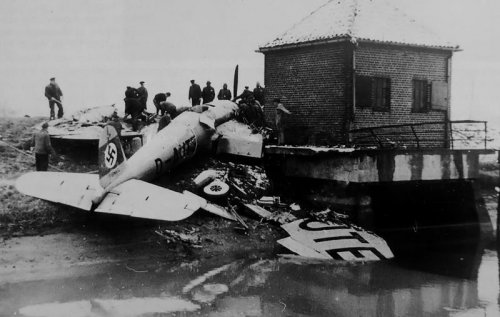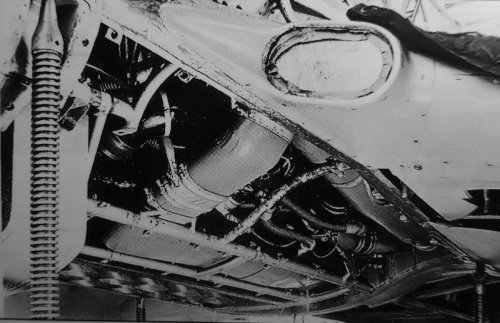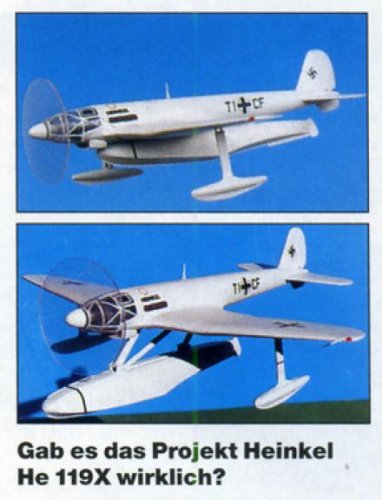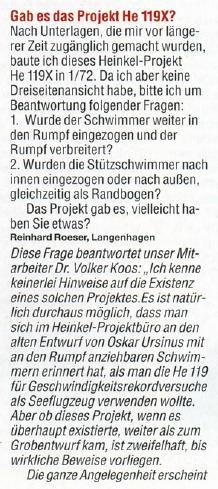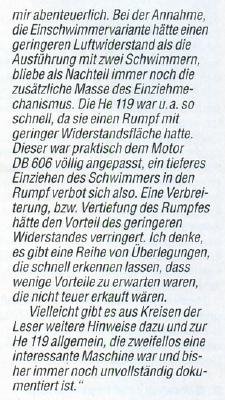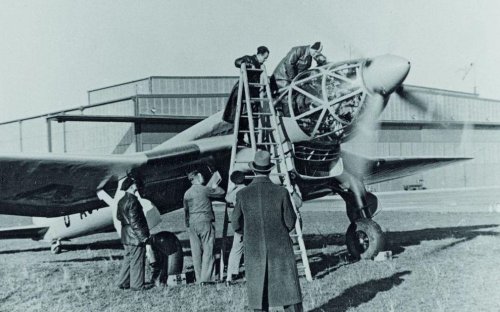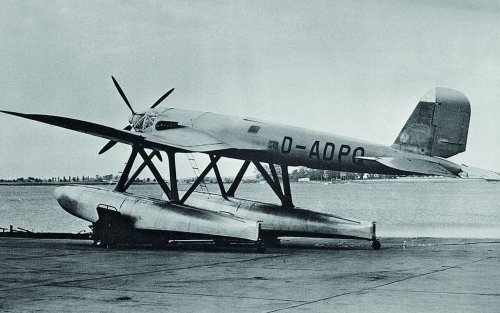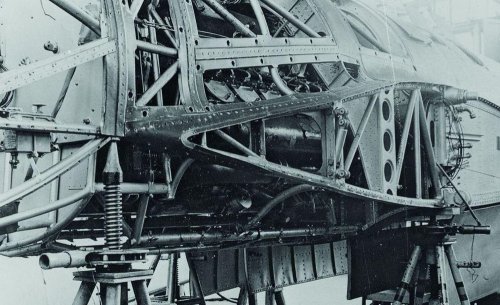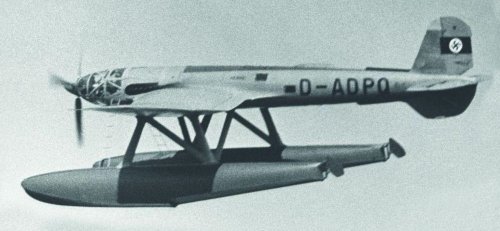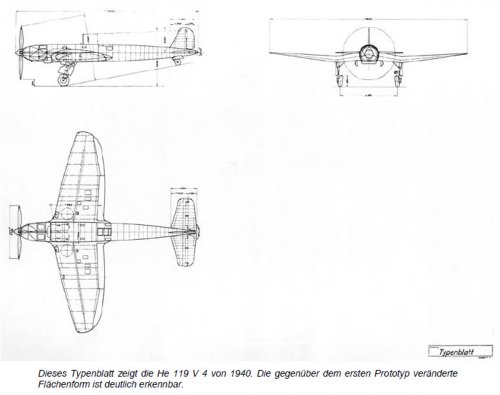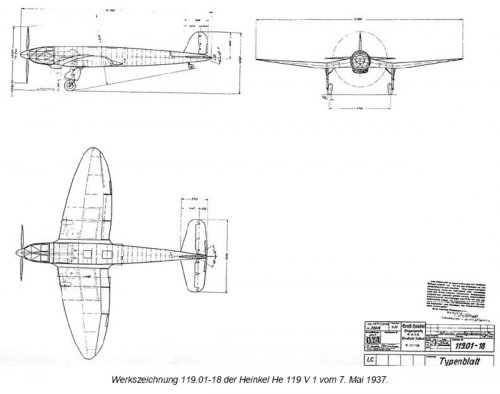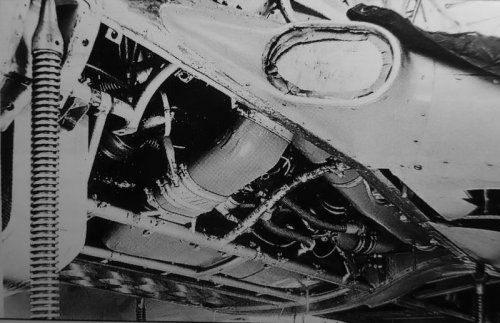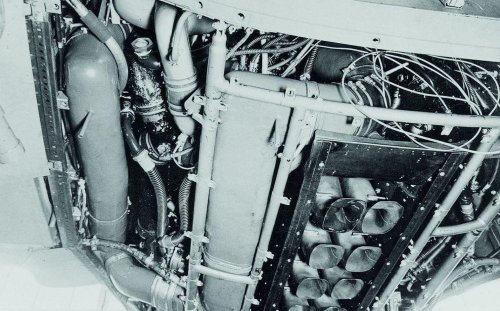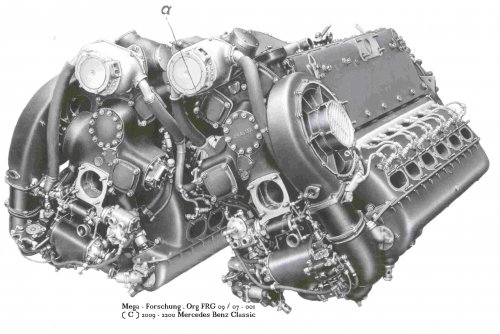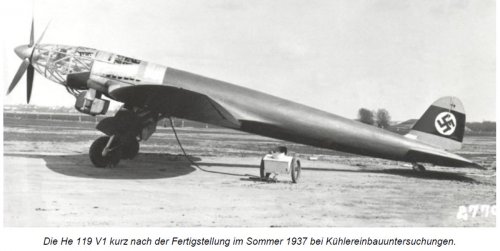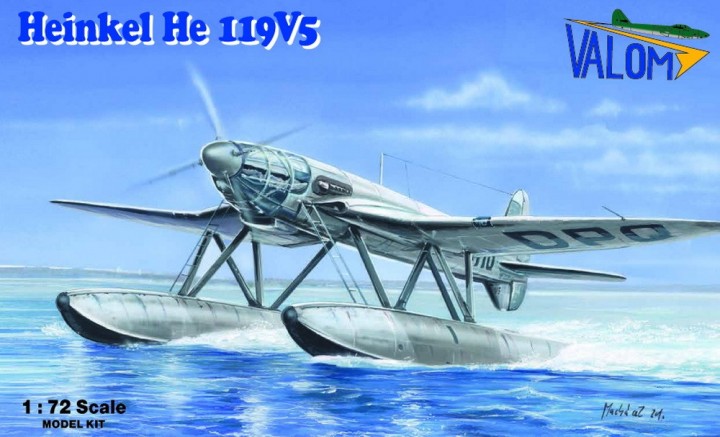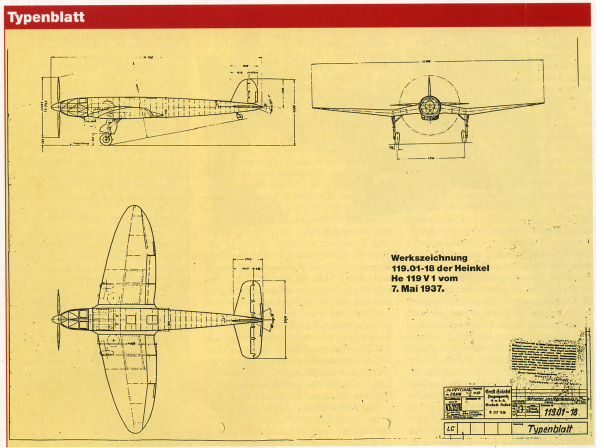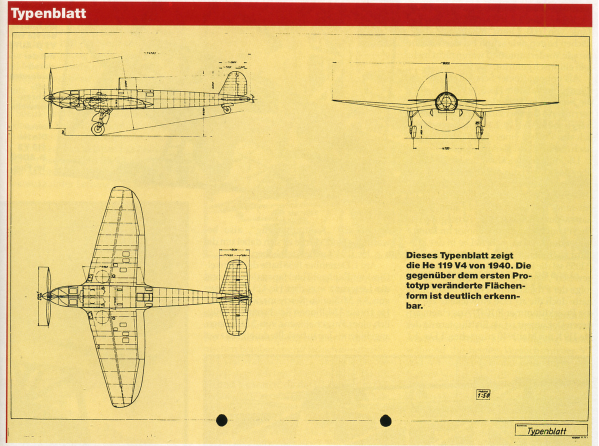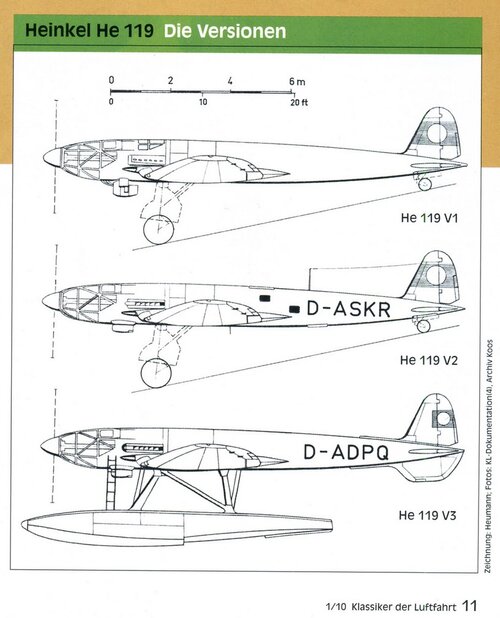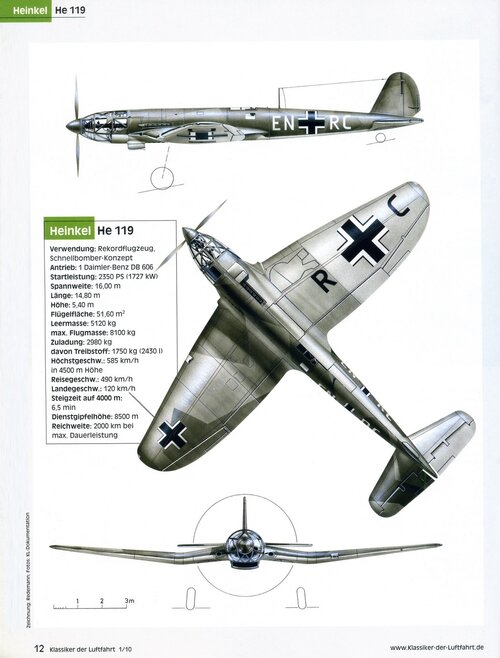Bill,
Thanks for the response. I'm glad you are still monitoring this thread. I had not considered your hypothesis about a rebuilt V1, probably because I have no information about the extent of the record airplane's damage other than what Green put in his seminal book that it ran through a drainage ditch. I've never seen any photos of the damage; I always assumed the landing gear was shorn off but the aircraft was repairable.
It's a pity so little is known about these machines. Their historical significance is immense in light of the impact they had on the subsequent He-177. Both aircraft demonstrate the brilliance and failings of the Gunter brothers' and Heinrich Hertel's design philosophies in the mid thirties. The Gunters were overly idealistic and sacrificed far too much weight and structural complexity just to obtain what they considered to be purity of form. Hertel was something of a mechanical engineering pedant - just look at his landing gear designs on the He-177 and Ju-288! I suppose we should all be glad the highly complex engine and cooling systems on the He-119 apparently worked reliably when flown by highly trained test pilots and maintained by factory experts. Had the airplane gone into production, I've often wondered just how it was intended to do an engine change. I've come to the conclusion that the entire nose had to be removed from a parting line shown in the early V1 photo between the painted aft fuselage and the engine/nose section!
To me, the He-119 marked the "next step" for Heinkel after the He-70 and its progeny, which went "two and two" when it came to success and failure: The Blitz and He-111 twin Blitz were highly successful while the -112 and -118 were not. The -119 and its progeny were abysmal failures going "zero and four." The -100, while beautiful, was never going to be an operational warplane. The fact alone that it required a constant supply of ethyl alcohol for its oil cooling system doomed any chance it had. The Germans had enough trouble just getting fuel and oil to the front. Only the -219, essentially a twin -100 with conventional cooling system achieved any kind of limited success (~300 airframes), and that was far too little and too late to have any impact on Germany's position in the war. Although much maligned, the -177 just took too long to reach an operational capability, by which time Germany no longer had the ability to support it in its intended role.
Thanks for the response. I'm glad you are still monitoring this thread. I had not considered your hypothesis about a rebuilt V1, probably because I have no information about the extent of the record airplane's damage other than what Green put in his seminal book that it ran through a drainage ditch. I've never seen any photos of the damage; I always assumed the landing gear was shorn off but the aircraft was repairable.
It's a pity so little is known about these machines. Their historical significance is immense in light of the impact they had on the subsequent He-177. Both aircraft demonstrate the brilliance and failings of the Gunter brothers' and Heinrich Hertel's design philosophies in the mid thirties. The Gunters were overly idealistic and sacrificed far too much weight and structural complexity just to obtain what they considered to be purity of form. Hertel was something of a mechanical engineering pedant - just look at his landing gear designs on the He-177 and Ju-288! I suppose we should all be glad the highly complex engine and cooling systems on the He-119 apparently worked reliably when flown by highly trained test pilots and maintained by factory experts. Had the airplane gone into production, I've often wondered just how it was intended to do an engine change. I've come to the conclusion that the entire nose had to be removed from a parting line shown in the early V1 photo between the painted aft fuselage and the engine/nose section!
To me, the He-119 marked the "next step" for Heinkel after the He-70 and its progeny, which went "two and two" when it came to success and failure: The Blitz and He-111 twin Blitz were highly successful while the -112 and -118 were not. The -119 and its progeny were abysmal failures going "zero and four." The -100, while beautiful, was never going to be an operational warplane. The fact alone that it required a constant supply of ethyl alcohol for its oil cooling system doomed any chance it had. The Germans had enough trouble just getting fuel and oil to the front. Only the -219, essentially a twin -100 with conventional cooling system achieved any kind of limited success (~300 airframes), and that was far too little and too late to have any impact on Germany's position in the war. Although much maligned, the -177 just took too long to reach an operational capability, by which time Germany no longer had the ability to support it in its intended role.

